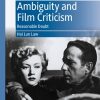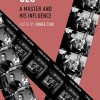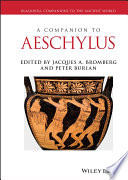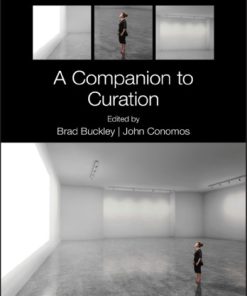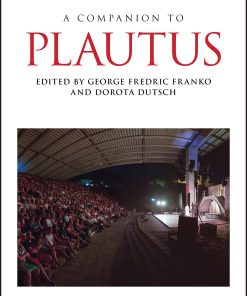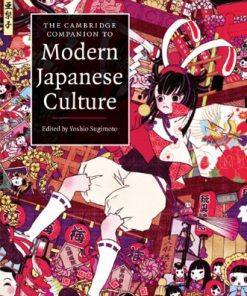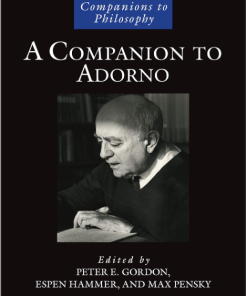A Companion to Japanese Cinema
$50.00 Original price was: $50.00.$25.00Current price is: $25.00.
A Companion to Japanese Cinema – Ebook Instant Download/Delivery ISBN(s): 9781118955321,1118955323
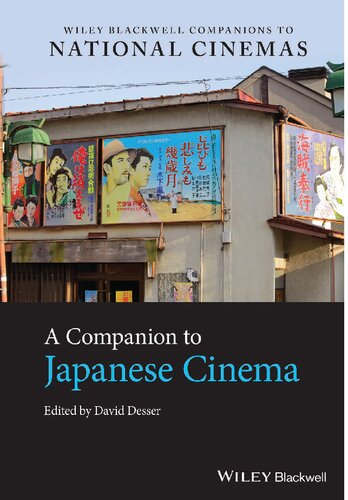
Product detail:
- ISBN-10 : 1118955323
- ISBN-13 : 978-1118955321
- Author: David Desser
In A Companion to Japanese Cinema, distinguished cinematic researcher David Desser delivers insightful new material on a fascinating subject, ranging from the introduction and exploration of under-appreciated directors, like Uchida Tomu and Yoshimura Kozaburo, to an appreciation of the Golden Age of Japanese cinema from the point of view of little-known stars and genres of the 1950s.
This Companion includes new resources that deal in-depth with the issue of gender in Japanese cinema, including a sustained analysis of Kawase Naomi, arguably the most important female director in Japanese film history.
Readers will appreciate the astute material on the connections and relationships that tie together Japanese television and cinema, with implications for understanding the modern state of Japanese film. The Companion concludes with a discussion of the Japanese media’s response to the 3/11 earthquake and tsunami that devastated the nation. The book also includes:
- A thorough introduction to the History, Ideology, and Aesthetics of Japanese cinema, including discussions of Kyoto as the cinematic center of Japan and the Pure Film Movement and modern Japanese film style
- An exploration of the background to the famous story of Taki no Shiraito and the significant and underappreciated contributions of directors Uchida Tomu, as well as Yoshimura Kozaburo
- A rigorous comparison of old and new Japanese cinema, including treatments of Ainu in documentary films and modernity in film exhibition
- Practical discussions of intermediality, including treatments of scriptwriting in the 1930s and the influence of film on Japanese television
Perfect for upper-level undergraduate and graduate students studying Japanese and Asian cinema, A Companion to Japanese Cinema is a must-read reference for anyone seeking an insightful and contemporary discussion of modern scholarship in Japanese cinema in the 20th and 21st centuries.
Table of contents:
Section 1 History, Ideology, Aesthetics
1 Kyoto – The “Hollywood of Japan”
2 The Pure Film Movement and Modern Japanese Film Style
3 Shiraito Redux: Text, Body, Desire from Kyoka to Mizoguchi
4 The Adventures of Uchida Tomu
5 Yoshimura Kozaburo and the Working Woman in the Old Capital
6 Calico-World in Rainbow Colors: The Aesthetics of Gender in 1950s Toei Jidaigeki
7 Silverscreen Dreamboats and the Polyvocal Address
8 Mad, Bad, and Beautiful: Revisiting Kurosawa’s Women
9 Biographies of Loss: The Cinematic Melancholy of Kawase Naomi
10 Shaping the Anime Industry: Second Generation Pioneers and the Emergence of the Studio System
11 Shapeshifting in Anime: Form and Meaning
Section 2 The Old and the New
12 Ainu in Documentary Films: Promiscuous Iconography and the Absent Image
13 Modernity in Film Exhibition: The Rise of Modern Movie Theaters in Tokyo, 1920s–1930s
14 Female Stardom and National Identity in Postwar Japan
15 Wild, Sexy, and Funny: Toei Does “Pink”
16 Behind the Voice that Brought Peace: The Emperor as Hero in The Emperor in August
17 Queer Time in Summer Vacation 1999
18 Horror Old and New: Nakata Hideo’s Ringu (1998) between J-Horror and Hibakusha Cinema
19 Youth, Trauma, and Contemporary Japanese Cinema
20 “Female Director”: Discourses and Practices in Contemporary Japan
21 The Dying Art of Japanese Cinema
Section 3 Intermediality
22 Before Media Mix: The Electric Ecology
23 Gosho and the Gagman: Scriptwriting at the Time of the Talkie Crisis
24 Inventing Television through Film: Japanese Cinema and TV, 1953–1963
25 ’Scope and the City: Reframing a Modern Metropolis
26 Bodies in Motion: Japanese Film of the 1964 Tokyo Olympics Era between Mass Culture, Media, and Memory
27 Adaptation as Cinematic Translation: Murakami Haruki and Ichikawa Jun’s Tony Takitani
28 Blockbusters in Japan: Hit Film Culture and the Rise of Fuji Television as Commercial Film Studio
29 Hani Susumu, Nouvelle Vague in Japan and Processive Cinema
30 The Cultural Turn in Post-3.11 Documentary: Kamanaka Hitomi’s Accented Documentary
People also search:
You may also like…
History - Ancient History
Arts - History & Criticism
Uncategorized
Business & Economics
(Ebook PDF) The Japanese Economy 4th Edition David Flath 019268888X 9780192688880 full chapters
Politics & Philosophy - European & American Philosophy
A Companion to Adorno (Blackwell Companions to Philosophy) 1st Edition
History - Ancient History
Arts - Film
Politics & Philosophy - European & American Philosophy


